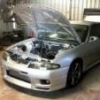Best Way To Mod A Gtr
Announcements
-
Similar Content
-
Latest Posts
-
By drifter17a · Posted
So now doing the change and first time dealing with rb so little nervous giving engine power and potential for screwing it up When you align all marks and then remove crank bolt, timing move little I assume you can put the bolt back in once you have removed the pully to get timing to where you want? here is pic of my both intake and exchust cam aligned, depending on angle you look they seem to be either aligned or a half tooth or so out. Any thoughts? Should you angle your face and look at each mark that way as if looking straight rather than from above as it can be misleading <a href="https://ibb.co/ZpnhcvbF"><img src="https://i.ibb.co/HfWrGR9b/IMG-4447.jpg" alt="IMG-4447" border="0"></a> <a href="https://ibb.co/4wm2wn4q"><img src="https://i.ibb.co/JWBqWwr1/IMG-4445.jpg" alt="IMG-4445" border="0"></a> https://ibb.co/ZpnhcvbF https://ibb.co/4wm2wn4q -
Thanks for the reply @GTSBoy Haven't really thought of that yet, but you are right. If the hose was damaged it should be absolutely pissing by now. I'll put some heat sleeve around it for good measure since I'm already removing the line anyway. Maybe I'll put on some of the stock hardlines if I ever fully remove the turbos again. Maybe when T51R modding the compressor housings? Might be a fun mod on GT28s for that "fake single turbo" effect.
-
Update 1: I did some work on the car already before finalizing this post and my "issues" list. I dropped the Tomei exhaust in favor of the HKS Hi Power Silent. Sounds nice and I can actually hear myself think now. Also gives me a realistic chance to legally drive without silencer inserts. A bit of cheating was necessary to still be able to mount the Top Secret style diffuser. Some malusage of washers and a bit of "convincing" toward the brackets and exhaust hanger seemed to do the trick. The shaky steering wheel has been resolved as various suspension components were worn, like sway bar bushings and link bars. Most notably the two steering tie rod ends. Had some trouble finding bushings because my sway bars are not OEM thickness, 23.x up front and 27 rear. But non adjustable, so no aftermarket I suppose. Maybe they are nismo units? Turbo oil drain hoses were definitely still the originals and are new now. Wasn't the cause of the turbo oil leak sadly. Currently removing the rear turbo because of it, I suspect the braided oil feed line is the culprit. This issue needs to be dealt with so I can work towards actually getting the turbo setup legal and inspected. Two new issues to add to the list as well. Rear Main seal is probably leaking. Time will show how bad it is, I don't really want to drop the gearbox right now just for the stupid seal. Could fix a few other things in one go once I do that. Front right driveshaft grease is going past the cv boot, so at some point I'll fix that too.
-
Ok so no 4cyl clutch... Yeah it is a factory manual. So if iam correct i need clutch and flywheel too? I can use something that suits something like R32 GTST? EDIT: https://www.ebay.com/itm/224291042776 Is this ok? EDIT2: i maybe forget to mention this(dk how important it is) but the trans will be behind RB25DET NEO(iam doing swap) It will be there for a little while. Iam planing to do bigbox or BMW tranny..
-
You're probably right about that one. Thanks for your suggestions, I hope I don't need a new 3rd brake light. Although wiring issues might arguably be worse. Right now I'm in the midst of a turbo removal because of my oil leak, other problems are going to have to wait for now.
-







Recommended Posts
Create an account or sign in to comment
You need to be a member in order to leave a comment
Create an account
Sign up for a new account in our community. It's easy!
Register a new accountSign in
Already have an account? Sign in here.
Sign In Now